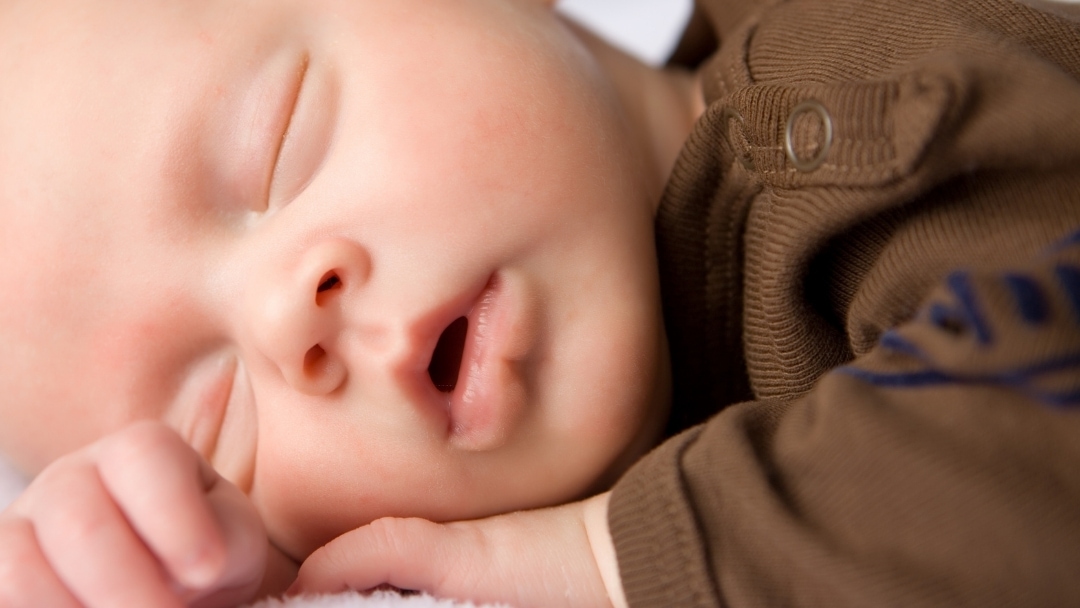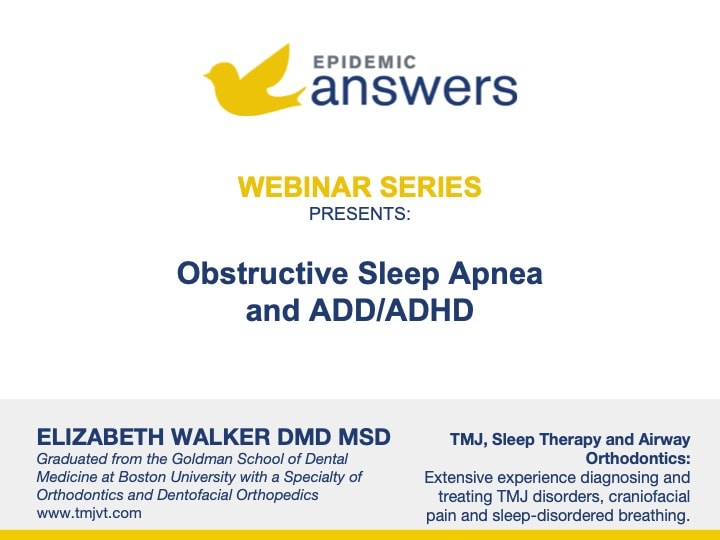What Is Obstructive Sleep Apnea?
Obstructive sleep apnea (OSA) is a condition in which a person’s airway is partially or completely blocked during sleep, which leads to snoring as well as a reduced oxygen saturation in the blood. It is the most common type of sleep apnea.
Symptoms of Obstructive Sleep Apnea in Children
Parents don’t often think of their child as having sleep apnea, but it can be quite common in children with the following diagnoses and/or symptoms:
- ADD/ADHD
- Snoring
- Mouth breathing
- Tongue tie
- Fatigue
- Not feeling well rested upon waking
- Poor concentration
- Hyperactivity
- Trouble latching while breastfeeding as an infant
- Failure to thrive
- Enlarged tonsils
- Crooked teeth
- Small jaw
- Highly arched palate with consequent narrowing of airways
- Open-mouthed posture associated with an imbalance in skeletal structural
- Chronic sinus infections
- Persistent gagging or vomiting especially when eating
- Picky eating
- Feeding issues
- Delayed speech development
- Acid reflux
- Speech impediment
- Anxiety
- Irritability
- Chronic headaches
What Your Doctor May Tell You About Obstructive Sleep Apnea
Your child’s pediatrician may tell you that the cause of OSA is either unknown or could be due to enlarged tonsils, being overweight or having blocked sinuses due to allergies and/or sinus infections. He or she will likely recommend a sleep test (polysomnography) to rule out or to diagnose the disorder.
If the sleep test shows that your child does have sleep apnea and if your doctor determines that enlarged tonsils could be responsible, he or she would likely recommend that your child’s tonsils be removed. Your child’s doctor may also prescribe medications that relieve symptoms of acid reflux, allergies and/or sinus infections.
If OSA remains unresolved, your child may need to use a CPAP (continuous positive airway pressure) machine during sleep.
Another Way of Thinking About Obstructive Sleep Apnea
Many children with OSA have narrow sinus passages that contribute to a lack of a proper amount of oxygen going to the brain. These narrow sinus passages may initially be caused by a tongue tie, which, according to researcher Ben Lynch ND, is often caused by a mutation of the MTHFR gene.
This mutation means that the body is unable to excrete toxins and pathogens efficiently, which may affect how other genes and development are expressed.
A tongue tie keeps the tongue from fully extending to the upper palate of the mouth.
Lack of stimulation of the upper palate by the tongue can lead to an overarched, high palate and a lack of full development of the jaw, resulting in narrow sinus passages. By correcting the jaw’s development with an oral appliance such as a palate expander, many other issues may be resolved, including obstructive sleep apnea as well as ADD/ADHD.
However, if OSA remains unresolved, your child may need to use a CPAP (continuous positive airway pressure) machine during sleep.
Checklist for Obstructive Sleep Apnea
See a myofunctional dentist or orthodontist:
Myofunctional orthodontics and dentists will likely perform an initial assessment to see if your child has tongue tie, a highly arched palate and a small, crowded jaw. These doctors will typically advise a frenectomy to remove a tongue tie and then implement a palate expander such as an ALF device.
They may also recommend that your child work with a “tongue tutor” (also known as an orofacial myofunctional therapist) as well as work with an osteopath and a craniosacral therapist. Following these steps may be able to remediate your child’s OSA as well as comorbid conditions and symptoms.
Still Looking for Answers?
Visit the Epidemic Answers Practitioner Directory to find a practitioner near you.
Join us inside our online membership community for parents, Healing Together, where you’ll find even more healing resources, expert guidance, and a community to support you every step of your child’s healing journey.
Sources & References
Bussi, M.T., et al. Is ankyloglossia associated with obstructive sleep apnea? Braz J Otorhinolaryngol. 2021 Nov 5;S1808-8694(21)00181-6.
Doff, M.H., et al. Oral Appliance Versus Continuous Positive Airway Pressure in Obstructive Sleep Apnea Syndrome: A 2-year Follow-Up. Sleep. 2013 Sep 1;36(9):1289-96.
Hesselbacher, S., et al. A Study to Assess the Relationship between Attention Deficit Hyperactivity Disorder and Obstructive Sleep Apnea in Adults. Cureus. 2019 Oct 24;11(10):e5979.
Huang, Y.S., et al. Attention-deficit/hyperactivity disorder with obstructive sleep apnea: a treatment outcome study. Sleep Med. 2007 Jan;8(1):18-30.
Hvolby, A. Associations of sleep disturbance with ADHD: implications for treatment. Atten Defic Hyperact Disord. 2015 Mar;7(1):1-18.
Kamata, S., et al. Assessment of Obstructive Apnea by Using Polysomnography and Surgical Treatment in Patients With Beckwith-Wiedemann Syndrome. J Pediatr Surg. 2005 Mar;40(3):E17-9.
Martel, J., et al. Could nasal nitric oxide help to mitigate the severity of COVID-19? Microbes Infect. 2020 May-June; 22(4): 168–171.
Sedky, K., et al. Attention deficit hyperactivity disorder and sleep disordered breathing in pediatric populations: a meta-analysis. Sleep Med Rev. 2014 Aug;18(4):349-56.
Urbano, G.L., et al. The Link between Pediatric Obstructive Sleep Apnea (OSA) and Attention Deficit Hyperactivity Disorder (ADHD). Children (Basel). 2021 Sep 19;8(9):824.
White, David P., et al. Mandibular Advancement Device vs. CPAP in the Treatment of Obstructive Sleep Apnea: Are They Equally Effective in Short Term Health Outcomes? J Clin Sleep Med. 2013 Sep 15;9(9):971-2.
Xiangming, L., et al. The relationship between inflammation and neurocognitive dysfunction in obstructive sleep apnea syndrome. J Neuroinflammation. 2020 Aug 1;17(1):229.
Youssef, N.A., et al. Is obstructive sleep apnea associated with ADHD? Ann Clin Psychiatry. 2011 Aug;23(3):213-24.




